Child labor comes up when we talk about the industrial revolution. When we discuss its modern incarnations, we usually think about sweatshops in the developing world. Human Rights Watch has a poignant video about child labor in the United States today. Their interviews with migrant farmer children, who are the same age as our middle-schoolers, are heartbreaking.
Author: Lensyl Urbano
Living in peace
This blog is my experiment with how my own small and everyday choices for peace impact my life and others. – Peggy Pate-Smith (2010) in “Peace is a choice”
Everyday choices often have a far-reaching impact because we live in a world that’s so interconnected. I tend to think in terms of the environmental impact of my actions: Do I buy this pair of shoes that may have been made by child labor in China? If I get a new, better cell phone will the old one be recycled properly or will it shipped off to some developing country where its corrosion will contaminate the water supply?
Peggy Pate-Smith from Park View Montessori‘s Middle School in Jackson, TN has been thinking about peace. Her blog, appropriately titled Peace is a Choice, logs her thoughts on small and big matters regarding peace. I’ve found it a great place to find out about peace projects, many with a Montessori link, in which students might be interested in participating.
This year I decided to do an experiment with peace. My hypothesis is that if each day I make at least one conscious decision to choose peace in my life AND blog about it that I will find my life more peaceful. I want to move beyond imagining peace and make a deliberate effort to choose peace. Peggy Pate-Smith (2010) in “Peace is a Choice”.
Ms. Pate-Smith’s master’s thesis, “Implications of Peace in the Montessori Environment” won American Montessori Society’s 2007 Outstanding Master’s Thesis Award.
Experiments with seedlings
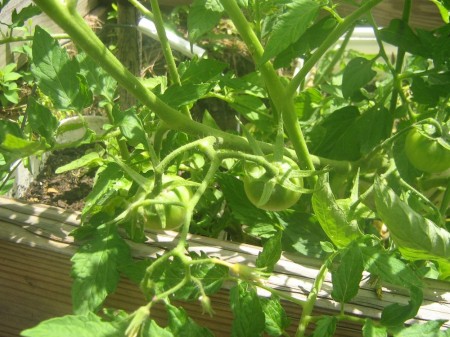
Next year we’ll be focusing on the life sciences, so this year one of my student’s research project was to try to grow some plants using the system we’d set up the year before to see how effective it was and to find out if we could use the plants we grow for a plant sale at the end of the year. I also started some plants at home as did the student’s parents, which served as a reasonable control.

We learned that you have to account for the different germination times for different plants, and the importance of hardening plants off before taking them outside. We also learned that the greenhouse can get too warm in the spring. While the plants we started at school were not the most successful, it was an extremely useful project nonetheless, otherwise we’d probably have made the same mistakes next year. A pair of temperature/humidity data loggers, for inside and outside the greenhouse, will be extremely useful for monitoring growing conditions.
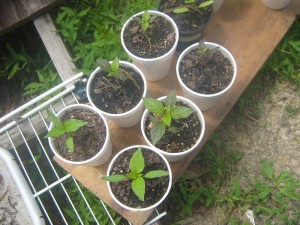
The big land-grant universities have fairly good extension services that have a lot of good information online. The University of Missouri’s page on Starting Plants From Seeds is quite useful, although it is not aimed at the organic gardener.
Vietnam in pictures
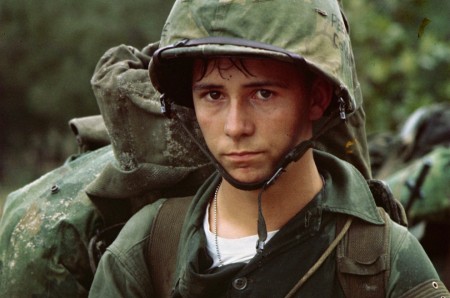
A slew of ideas and conflicts swirl around the Vietnam War: democracy, communism, dictatorship, freedom, colonialism, domino theory, chemical warfare, technology …. We’re supposed to look at wars through the lens of the “Characteristics of War”, but what do offense and defense mean in a war like Vietnam? A close examination of any of these words in the face of Vietnam leaves more questions than answers. The Boston Globe has a heartbreaking collection of images from the Vietnam War that give a remarkably multifaceted view of the conflict and its consequences. The photos are iconic and some are graphic.
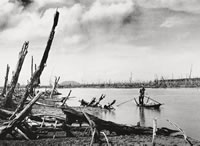
The photographs in the Boston Globe were mostly taken by western photographers (some were from the U.S. military), whose journalistic culture inspired them to try to capture all aspects of the war, to tell the whole story, independent of their own allegiance. There were fewer North Vietnamese photographers and their job was to capture images that would promote their side of the war. Even so, some of their photographs are also amazing and offer another perspective.
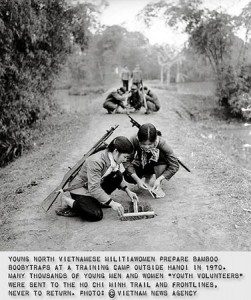
National Geographic collected some of these photos in Another Vietnam: Pictures of the War from the Other Side. More photos are available from SnugMug.com, and National Geographic has a documentary on North Vietnamese photographers called, Vietnam – The Unseen War (a 5 minute preview is available on VEOH).
These images help tell the story of how powerful the media can be, particularly in a democracy. What’s also interesting is the youth of many of the combatants on both sides.
[googleMap name=”Vietnam” width=”490″ height=”350″ mapzoom=”4″ mousewheel=”false” directions_to=”false”]Vietnam[/googleMap]
Nashville flooding and mid-latitude cyclones
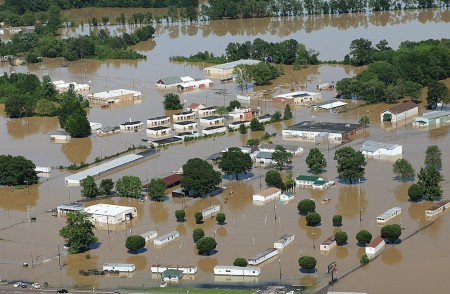
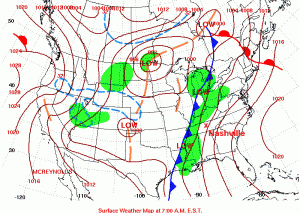
Over 30 cm of rainfall in just two days resulted in extensive flooding in Nashville, TN, last week. The precipitation was produced by one of those typical mid-latitude cyclones that sweep across the United States, from west to east, every spring and fall. The Boston Globe has some amazing picture of the flooding.
The news media tends to have the most dramatic photographs of disasters, but the Federal Emergency Management Agency (FEMA) also tends to have good images from their aerial surveys (like the image at the top of this post). And images produced by the government are in the public domain so you don’t have to worry about using them.
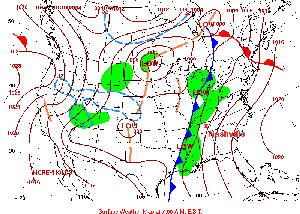
For discussing warm fronts, cold fronts and mid-latitude cyclones, NOAA‘s Hydrometeorological Prediction Center (HPC) is a great resource. You can find an archive of daily weather maps for the U.S. that you can click through to see the fronts move.

Satellite imagery usually complements to the frontal weather maps very well. Most satellites orbit around the Earth pretty quickly, at just the right orbital speed that the centrifugal force just balances the Earth’s gravity so the satellite does not crash into the atmosphere or escape into space. Some satellites are set into orbit a bit further out so that they can rotate with the Earth, effectively staying above the same place all the time. NOAA has a few of these geostationary satellites monitoring the weather around the world, and you can get real-time images from the Geostationary Satellite Server. There used to be archived satellite images but I can’t seem to find them at the moment.
Sleep deprivation leads to obesity

A new study links sleep deprivation to obesity in adolescent boys. There have other studies linking lack of sleep and obesity, but this is one of a few looking specifically at adolescents.
The study was presented at the annual Pediatric Academic Societies meeting under the title Is Sleep Related to Obesity in Young Adolescents?. Interestingly enough, there was less of a correlation for girls.
However, in girls, sleep duration was not related to any of the weight-related variables with the exception of less sleep on weekends being related to BMI. – Lytle, Pasch and Farbaksh, 2010.
The USDA has a nice page that touches on the research that’s looking for specific links between sleep deprivation and weight. Their take is that kids don’t get out enough because increased opportunities for indoor entertainment don’t require much activity and disrupt sleep cycles. They suggest that fat cells themselves may respond to changing circadian rhythms.
Abnormal sleep/wake patterns may change circadian clocks that normally allow cells to anticipate variations in the outside environment, such as changing levels of nutrients (glucose, fatty acids and triglycerides) and hormones such as insulin. – Flores, 2007.
I don’t know enough to speculate as to why, but, thinking out loud, I wonder if boys’ predilection for overusing video games has any link to the obesity issue.
Art; creation
An excellent Project Song article on NPR follows Moby and singer/songwriter Kelli Scarr as they write and record a song over the course of two days. The song itself, called Gone To Sleep, is quite good but the article, where they follow the artists in the process of creation is quite fascinating.
Best nature photos
The Guardian newspaper put together an excellent collection nature photographs for auction for an Earth Day charity. I particularly like the pictures from the Franklin River, south-west Tasmania, Australia and Stone Canyon, Arizona/Utah, U.S.A.. Apart from the wonderful composition and spectacular lighting, I like the effort and meaning behind these images.

According to the Guardian, the Franklin River image was instrumental in preventing the flooding of the river for an hydroelectric dam. The Stone Canyon picture was used to try to have the area declared a national monument. I particularly appreciate the effort of Jack Dykinga, who took the Stone Canyon photo. He hiked up the slot canyon at 3:30 am in order to get the photograph at dawn; with their softer light and reddish tints, sunrise and sunset are the best times for photography.